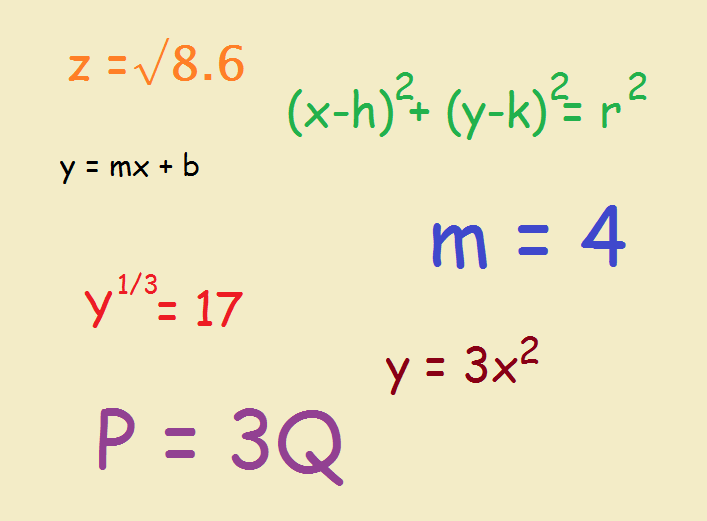 Have you gone past arithmetic and tried algebra for beginners?
Have you gone past arithmetic and tried algebra for beginners?
Having opted for the “college prep program” at high school, I took Algebra I, freshman year. My instructor was Miss Diamond. She wore those black lace-up shoes elderly women wore then. She was not unkind, although she was rather out of touch with some of the students—including me.
It was the first days of class, and, despite seeking her help, I wasn’t getting the concepts. So I turned to the student seated behind me. In about five minutes—perhaps less—he set me straight with his algebra for beginners. I became one of the best students in the class. The principles are easy.
Constant -vs- Variable
The simplest concept was also the most difficult for me, as paradoxical as that may sound. A constant is constant. If a measuring stick is 12 inches long, ten minutes later it is 12 inches long; two days later, it is 12 inches long. The number of inches is a constant. A variable needs more careful explanation.
Consider the temperature outdoors, T. At 8 a.m. in the morning, the temperature may be 48° Fahrenheit. An hour later, it may be 50°. At 10 a.m. it may be 52°. At 11 a.m., 54°. At noon, 56°. Since T varies as the day progresses, it is a variable. When we look at how it changes, we see that between 8 a.m. and 12-noon, it increases by 2° F. each hour.
Algebra for Beginners – Writing an Equation
Let’s see if we can’t write an equation from the facts. We know the time varies each hour—8 to 9, 9 to 10, 10 to 11, and 11 to 12. The number of hours after 8:00, we’ll choose to call H. At 9 a.m., H = 1, at 10 a.m., H = 2, at 11 a.m., H = 3, and at noon, H = 4. Since H varies, like T, H is also a variable.
The temperature -vs- time equation is written,
T = 48° + 2H
Is this equation a proper and correct equation? We have two constants (48 and 2) and two variables (T and H). It is proper. But let’s check to make sure it is correct.
At 9 am:
H = 1, so 2H = 2.
48 + 2 = 50.
50 is the temperature at 9 am.
That’s correct.
At 10 am:
H = 2, so 2H = 4.
48 + 4 = 52.
52 is the temperature at 10 am.
That’s correct.
At 11 am:
H = 3, so 2H = 6.
48 + 6 = 54.
54 is the temperature at 11 am.
That’s correct.
At 12 noon:
H = 4, so 2H = 8.
48 + 8 = 56.
56 is the correct temperature at noon.
Assuming the temperature behaves the same before 8 am and after noon, we can even calculate—using this equation—what the temperature would have been at 7 am and 1 pm.
At 7 am:
H = ‒1, so 2H = ‒2.
48 ‒ 2 = 46.
46° would have been the correct temperature at 7 am.
At 1 pm:
H = 5, so 2H = 10.
48 + 10 = 58.
58° would be the correct temperature at 1 pm.
For that matter, we can use the equation we derived to determine the temperature at 10:30 a.m., or even for 8:41.
Note: You might also enjoy Consonants and Variables: A Simple Introduction to Algebra
References:
- Grays Harbor College: Basic Algebra
- West Texas AA&M University: Virtual Math Lab – Beginning Algebra
← Back to Math-Logic-Design
← Home

I did algebra in school but the terms “constant” and “variable” were not employed, or perhaps they may have been and I just didn’t listen – which is quite possible. So the first time I “met” a variable was reading a booklet on how to use the ZX81 – the very first personal computer. The variable was called “butter” and I was to let the variable “butter” be equal to 3. I found it totally confusing! After that, I took a basic computer programming course. That was in the days even before Windows 3.1. We worked on BBC computers, with no graphics, writing in BBC B, a computer programming language which apparently was quite structured for the time. This was an evening course I went on while at work. Work paid for it because computers were just coming in and they wanted me to run courses for the workers who would be using them.
Maybe you have one of those old computers still? If so, it might be worth “a pretty penny”.